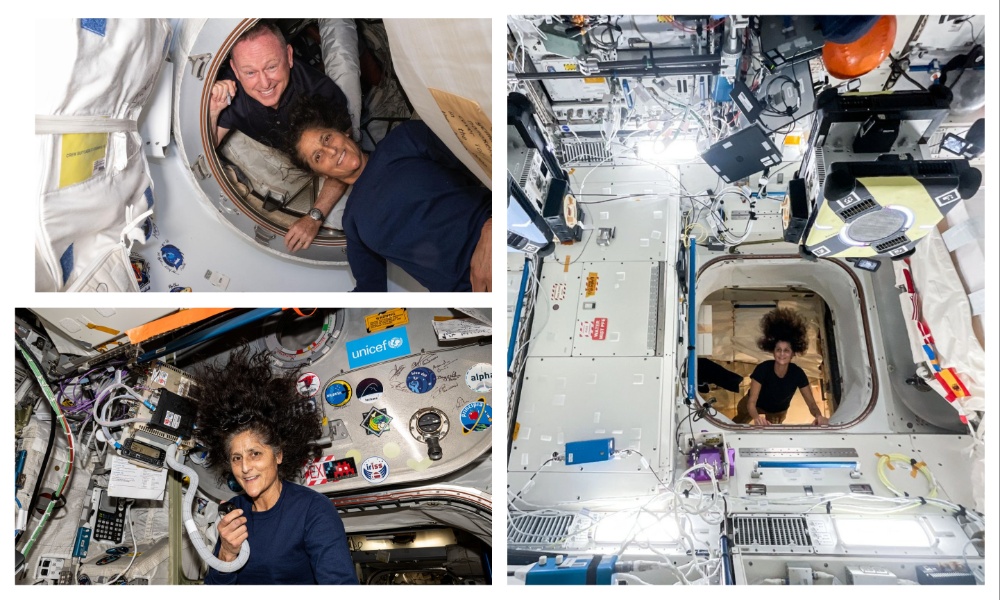
Elon Musk's SpaceX to bring US astronauts Sunita Williams and Barry Wilmore back to Earth: NASA
NASA has chosen Elon Musk’s SpaceX to bring US astronauts Sunita Williams and Barry Wilmore back from space next year.
NASA administrator Bill Nelson announced Sunday that Williams and Wilmore will return next February with the SpaceX Crew-9 mission after spending more than 80 days aboard the International Space Station (ISS).
Spaceflight is risky, even at its safest and most routine. A test flight, by nature, is neither safe nor routine. Our decision to keep Butch and Suni aboard the Space Station and bring Starliner home uncrewed is the result of our commitment to safety: our core value. https://t.co/xfgEKFRY2f
— Bill Nelson (@SenBillNelson) August 24, 2024
The two astronauts arrived at the International Space Station on Boeing’s Starliner for an 8-day mission, but due to major technical issues with the Boeing capsule, their stay was extended.
The SpaceX Crew Dragon spacecraft is scheduled to launch next month as part of a regular astronaut rotation mission.
Tune in: I'm live from @NASA_Johnson with an important update on NASA's Boeing Crew Flight Test. https://t.co/psOdz4Yw3C
— Bill Nelson (@SenBillNelson) August 24, 2024
NASA Administrator Bill Nelson explained that the propulsion system of the Starliner presents too much risk to safely return its first crew. Consequently, the Starliner will undock from the ISS without a crew and attempt its return to Earth as if it were carrying astronauts.
“As we got more and more data over the summer and understood the uncertainty of that data, it became very clear to us that the best course of action was to return Starliner uncrewed.” He said NASA found “there was just just too much uncertainty in the prediction of the thrusters,” NASA Commercial Crew Program manager Steve Stich was quoted as saying by Verge.
“If we had a way to actually predict what the thrusters would do, for the undock, and all the way through the de-orbit burn, and through the separation sequence, I think we would have taken a different course of action. But when we looked at the data and looked at the potential for thruster failures with the crew on board ... it was just too much risk for the crew, and so we decided to pursue the uncrewed testflight.
Verge further reported that NASA Associate Administrator Ken Bowersox responded to a press question about how NASA can trust Boeing again saying, “We’ve had a lot of tense discussions, right? Because the call was close, and so people have a lot of emotional investment in either option, and that gives you a healthy discourse. But after that, you have to do some work to keep your team together, right?”
“And I’ll acknowledge that we have some work to do there. It’s pretty natural when you’ve had a difficult decision to make.” Bowersox said that NASA remains “committed to working with Boeing.”
Stich added, saying, “Boeing did a great job building a model. The question is, ‘Is that model good enough to predict performance for a crew?’” He added later, “There was just a little disagreement in terms of the level of risk. And that’s kind of where it got down to, and I would say it’s close. It’s very close; it just depends on how you evaluate the risk. We do it a little differently with our crew than Boeing did.”
The two astronauts have been forced to spend 8 months aboard ISS after thruster failures, helium leaks, and valve issues plagued the already long-delayed Starliner while it was docking with the ISS.
Due to restricted access to the spacecraft docked at the ISS, tests at NASA’s White Sands Test Facility suggested that deformed Teflon seals might have contributed to the failure of the spacecraft’s thrusters.
However, lacking definitive answers, NASA delayed its decision on whether to return the astronauts aboard the Starliner or to collaborate with SpaceX for an early return next year via the Crew-9 mission, scheduled to launch to the ISS in late September.
Since Starliner docked with the ISS in June, Boeing has been working urgently to understand the causes of its thruster issues and helium leaks. The company conducted tests and simulations on Earth to collect data and persuade NASA officials of Starliner’s safety for crew return.
However, the results from these tests raised more challenging engineering questions and did not fully alleviate NASA’s concerns about the spacecraft’s ability to complete the crewed return trip— the most demanding and complex aspect of the test mission.
Support Our Journalism
We cannot do without you.. your contribution supports unbiased journalism
IBNS is not driven by any ism- not wokeism, not racism, not skewed secularism, not hyper right-wing or left liberal ideals, nor by any hardline religious beliefs or hyper nationalism. We want to serve you good old objective news, as they are. We do not judge or preach. We let people decide for themselves. We only try to present factual and well-sourced news.






